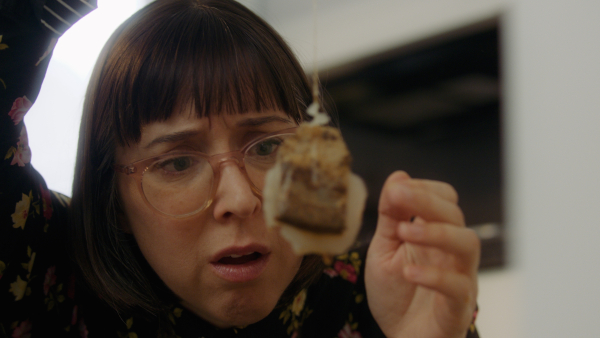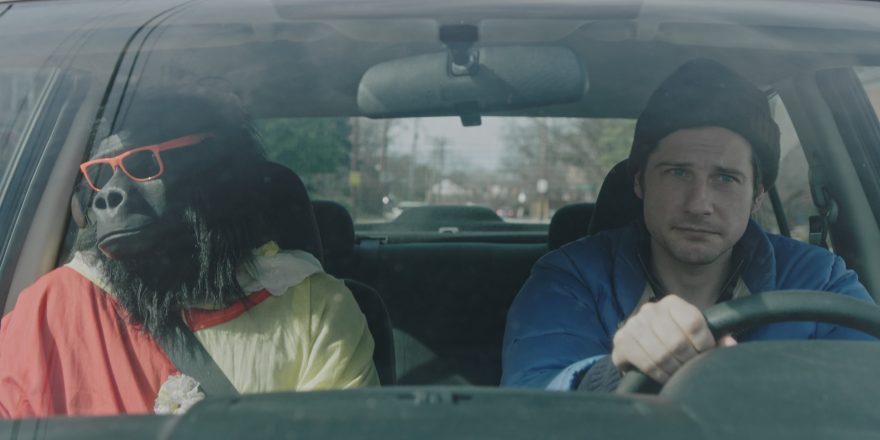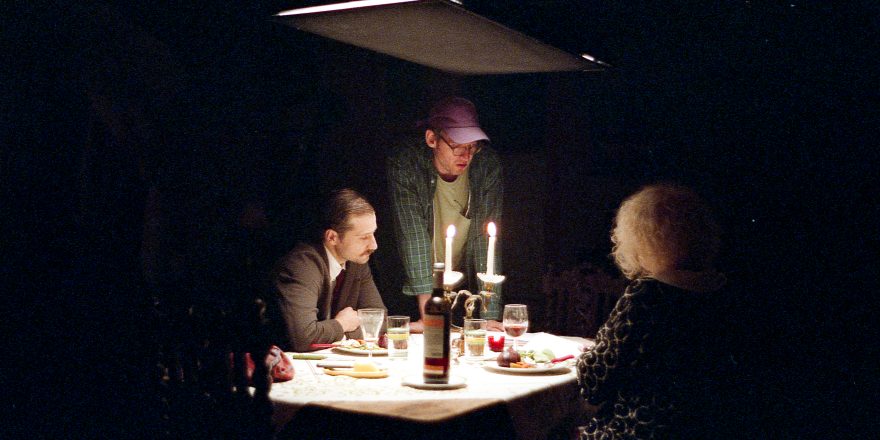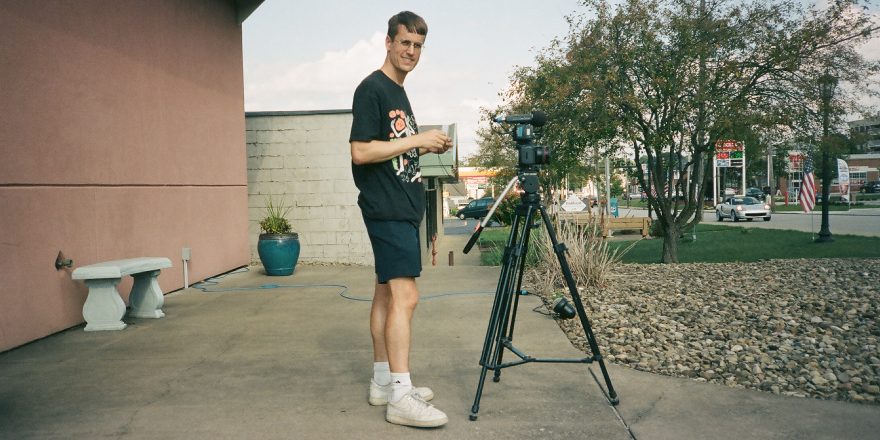What does an orgasm look like?
That was the key question in our heads during the summer of 2022. Things were different back then. Dall-E and Midjourney had just come out and it seemed like everyone was trying to make the coolest, weirdest images they could using it. There were maybe a few voices at the time ringing the alarm bell about the potential dangers of AI, but not many. Coincidentally, it was also the time that we were deep in post-production on our first feature film, Darla in Space.
Our movie is about a woman who learns she owes $349,000.22 in taxes and teams up with a sentient kombucha scoby named Mother to pay it off using Mother’s ability to grant mind-blowing orgasms. A super standard setup for a movie.

Less standard was how to depict these mindblowers onscreen. Phrases such as “floating in a viscous substance,” “nowhere that exists in the universe” and “fleeting, amorphous images” were easy enough to type into a screenplay, but when it came time to shoot such footage, it was less straightforward. How does a sentient, orgasm-granting kombucha mother experience the world with no sensory organs?
The deeply bizarre, reality-adjacent imagery coming out of AI apps at the time seemed like the perfect way to represent these scoby-induced orgasms which would send the orgasmer into what we called “Menage Space.” We located a person who was interested both in coding and in AI, and he worked off a Github app to create a bunch of video elements that were appropriately off-putting and dreamlike. Most importantly, we saw these elements as plausibly representing a kombucha mother’s view of the world.
He was given key words and phrases such as “beige shipping container” and “medieval painting of a sky with stars” to feed into the software and after often 24+ hours of rendering, the resulting video was shared with us for further refinement. We finished post in the fall, and began submitting for festivals in the next year. Eventually we played at Slamdance in January of this year!
Then we noticed on everyone’s favorite review site, Letterboxd, that a few people were calling out our 90 seconds of AI footage and dismissing the rest of the movie straight up. There are plenty of reasons why Darla might not be your jam, but for these people, they seemed most at odds with our use of AI. About two seconds later, the ethics of AI became a huge thing: Job loss, attribution of the training models, machines becoming Terminators, etc.
The new question for us became: what if we replaced the AI footage in our movie? We decided we’d only do it if we thought of better ideas. Eventually, we realized we should just go back to our fully handmade roots of the rest of the film, and came up with a solution to kombucha orgasms, and we haven’t really look back since.
One sequence is AI. One is new.
But the fact remains: is there ever going to be any justified use of AI in anything? We still feel philosophically, for our particular movie/piece of art, AI was a solid answer to a question that perhaps no one had ever had before (or ever would again?). Nobody was going to mistake the AI imagery in Darla as photo-realistic; the original assignment was to lean into the wonkiness that AI’s detractors seemed to have issue with. For us, this particular “failing” was a benefit, because if a scoby was gonna see anything, it would see it in this askance way.
Were we reacting to a vocal minority, or is this what a majority of people think? People we talked to face-to-face about it saw AI as full of gray areas, but the internet made it very black and white.
Ultimately we feel like it was worth removing the AI because we could never be sure what the AI models were trained on and had to assume it was done without the original artist’s consent.
It does seem like a lot of the uproar with AI is with forward-facing uses of it: music, video, stills, etc. Under the hood, uses of it are already embedded into almost every product you touch. You can’t use anything from Adobe anymore without using some AI-powered tool in it. If you use Google or Apple or Microsoft products, you are using AI whether you like it or not.
So AI is here to stay, but how should we feel about it? Despaired? Hopeful … or is that naïve? Companies will continue to get better at attribution, and potential creators are now much more cognizant of making sure permission is given. But even now, Lionsgate has just announced they are licensing all their content for training to an AI company. Surely this is being done without the permissions of everyone who created the content, regardless of the legality of these proceedings. No doubt, it already is upending many job markets, which makes it a hard sell.
But AI in art: ever?
There are some who might answer “never,” but that fails to acknowledge technology’s part in influencing and being influenced by art and its commerciality. New technologies have always presented artists with new opportunities to explore different avenues, representations, methods. The art of painting did not die with the invention of the camera.
For this particular technology, however, we must move forward responsibly, which requires understanding what we think of machines interpreting, reinterpreting and synthesizing images using the original work of human beings.
In the end, it was not a difficult decision to replace the AI sequences with a different take on the “Menage Space,” because the original version was created using a tool whose newness precluded our ability to work with it at a truly granular level. Although that footage was successful in representing Mother’s perspective, there was nothing in it or about it that was so vital that the integrity of the whole would be diminished by replacing it with different footage.
But what if we felt strongly that the AI in our movie was justified artistically? Surely there are those out there who have used it with strictly artistic intent and think it’s OK. It seems to us that there must be some use of it that is justifiable from an artistic standpoint, but we certainly aren’t the ones to try and figure it out.
Anyways, glad we could solve the problem of AI.







